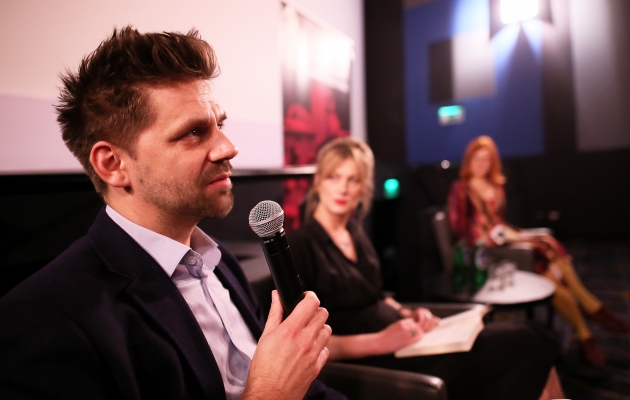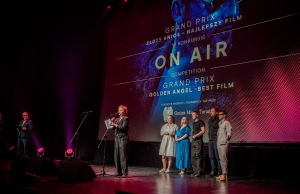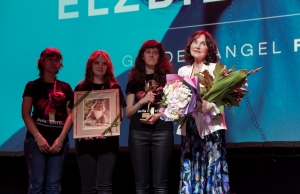There are films the value of which is absolute – A discussion with Professor Marcin Jaranowski

The Tofifest Festival is always eager to work with artists and organisations, which follow the principle of artistic rebelliousness. This year, viewers had an opportunity to take part in a discussion organised by “Szpulka” Women's Film Discussion Club, following the screening of the film Portret kobiety w ogniu / Portrait of a Lady on Fire. Professor Marcin Jaranowski, philosopher and ethicist from the Nicolaus Copernicus University in Torun, made a special guest appearance at the meeting. The meeting focused on discussing the subjects of freedom, sources of inspiration for film directors, and painting.
The film directed by Céline Sciamma cannot be considered a typical feminist-oriented film, although the majority of viewers attending all scheduled screenings are women, and the scenes showing men are scarce and short, sometimes reduced to mere driving of nails. The intention of the film director is to encourage us to reinterpret common notions, our reality, and myths. She has developed a taste for being a person, who makes decisions and matters, suggested professor Jaranowski. This diagnosis seems to be true, as Céline Sciamma, when asked on several occasions to explain the main theme of the film and the symbols used in it, suggested in return that we should ponder on some of the dogmas all of us knew very well. What if we have all been completely wrong so far, when it comes to interpreting the ways women behave? What if we mistook their greatest power for weakness? It took me a long time to find the proper interpretation of the film. I also listened to an interview with the director yesterday. The manner in which she answered questions and the sheer joy she demonstrated when listening to them could be a proof that she was well aware that we, the viewers, were unable to fully work out the interpretation of the film. To be honest, I love the film so much precisely because I do not understand it completely. I have dealt with philosophy for more than ten years and I know from experience that I quickly lose interest in those authors, whose work is immediately very clear to me. That was how the professor encapsulated his opinion about the film director, which was widely approved by the audience at the meeting.
Our guest did not shy away from referring to people famous in the world of philosophy and perceptions of evil, the latter of which is the main subject of his academic work. He went as far as suggesting the audience some alternative works of art, which he believed not only dealt with themes similar to the ones discussed in Portrait of a Lady on Fire, but also looked at the problem from a similar perspective. There are works of art based on a concept of relative fairness: they make reference to something that lies beyond the story being told. Portrait of a Lady on Fire is a perfect example of that, as women were pushed to the margin of society for centuries. It was men, who decided the life, death, and fate of all kinds of people, and that is why the film puts emphasis on the exactly opposite side. In the film, women appear to be saying: we have been marginalised all this time, so it is time you have had a taste of what it looks like from the other side. Wojtek Smarzowski adopts a similar perspective in his Clergy, for example, only the environment is different, explained the professor.
Naturally, the whole discussion had its healthy share of controversy, which undoubtedly worked to the benefit of the film. The fact that many participants of the meeting differed in their opinions with the professor was a clear proof that our personal views and experience have a great impact on the way we perceive works of art. In addition to the speculations about freedom and love, the discussion also focused on symbolism and the quality of the portraits painted on the big screen. There was a number of people among the audience, who were either passionate about painting or had ties with painting by profession.
The flexible attitude of professor Jaranowski was yet another great quality of the meeting. He went much further that simply sharing his points of view with the audience, as he was equally eager to relate to suggestions and interpretations provided by the viewers present in the auditorium. Those are exactly the people we want to have at our festival, as it takes an open mind to be able to truly appreciate art!
We must bear in mind that film festival go beyond mere screenings of ambitious films, but they also invite you to dive deep into subjects that we rarely talk about on a daily basis. They invite you to take part in discussions and to interpret. Where does the line that divides one’s own interpretation form misinterpretation lie? Is the director of Portrait of a Lady on Fire right in saying that cinema is still in need of a fresh look and discussing the same issues from different perspectives? Come and take part in the last weekend film screenings, hoping that each one of us will discover something new in them. Something to occupy our thoughts with, until the next year.
Anna Tomaszewska
Also in this section
- Idea
- Sections
- Awards
- Jury of 2025 On Air Competion
- Archive




